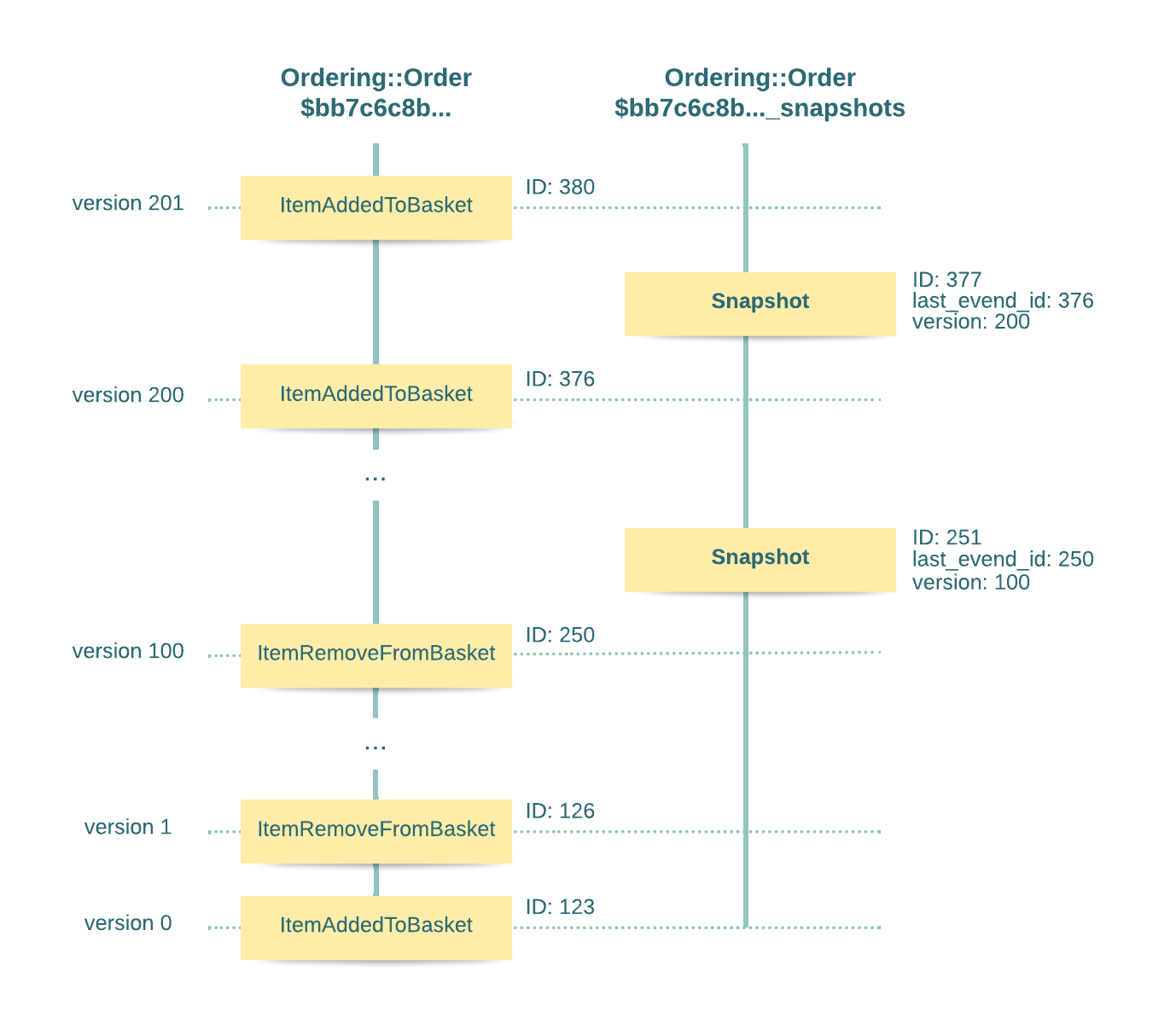Speed up aggregate roots loading with snapshot events
… and check why 5600+ Rails engineers read also this
Speed up aggregate roots loading with snapshot events
Rails Event Store 2.7 is coming in a few days with a new experimental feature: AggregateRoot::SnapshotRepository.
In event sourcing, each change to the state of an aggregate root is recorded as an event in the event store, linked to the specific stream. This allows for a complete history of changes to be tracked but can also lead to slow performance if there are a large number of events for a single aggregate root.
A general rule of thumb is to design short-lived aggregates regarding the events count. However, you can find yourself in a situation where the streams rapidly grow too big, and loading becomes a performance bottleneck. It would be best if you had a quick solution to this problem.
This is where Snapshotting comes in.
Paradox of choice
There are several common patterns for implementing aggregate snapshot features.
- They can be treated as a kind of technical events, or they can be stored out of the event store.
- If you go with the first approach, you can use the aggregate root’s stream or a dedicated one.
- It is not so obvious how to dump the aggregate state for persistence.
- We can also discuss whether Aggregate should know about being snapshotted or if it is strictly a repository’s responsibility.
So many things to consider made us blocked from providing a ready-to-use solution for some time. There were debates about which patterns to follow and which to reject.
During our last RES camp in Poznań, we decided to break the deadlock and offer a simple solution to check if it is a good fit for the community.
RES implementation
For an initial implementation, we decided to go with an alternative aggregate root repository storing snapshots in a separate stream for a given interval of events.
# save aggregate snapshot on each 50 events
repository = AggregateRoot::SnapshotRepository.new(event_store, 50)
# or stick to the default interval of 100 events
repository = AggregateRoot::SnapshotRepository.new(event_store)

In the above example, using snapshots every 100 events, with aggregate root Order having 202 events, we would have only 2 events to read from the event store to load the aggregate root.
- At first, we check for the latest snapshot event (ID: 377) in the
Ordering::Order$bb7c6c8b..._snapshotsstream. We initialize the aggregate root state from the event data if it exists. - Then, we read the remaining domain events (ID: 380) from the
Ordering::Order$bb7c6c8b...stream and apply them to the aggregate root one by one.
A standard implementation would go through all 202 domain events to achieve the same result. STONKS!
Dumping the state
Under the hood, we use Ruby’s Marshal library to dump the aggregate root state into a byte stream, allowing them to be stored in the event data.
Marshal format has its limitations. Dumping an aggregate root will not work if its instance variables are bindings, procedure or method objects, instances of class IO, or singleton objects.
It is also impossible to load a dump created with a different major version of Marshal.
AggregateRoot::SnapshotRepository deals with these possible problems by catching errors and falling back to the standard implementation of linear reading of all the events from the aggregate roots stream.
To ensure whether aggregate roots are dumped and restored with the snapshot support, you can subscribe to a specific ActiveSupport::Notifications using AggregateRoot::InstrumentedRepository.
require 'logger'
instrumented_repository = InstrumentedRepository.new(repository, ActiveSupport::Notifications)
logger = Logger.new(STDOUT)
ActiveSupport::Notifications.subscribe("error_occured.repository.aggregate_root") do |_name, _start, _finish, _id, payload|
logger.warn(payload[:exception_object].message)
end
W, [2022-12-13T16:19:33.175471 #62803] WARN -- : Aggregate root cannot be restored from the last snapshot (event id: 'bb7c6c8b-dc8d-4b79-bc8f-405a3713b825').
Keeping exploring
That is not the only possible snapshot implementation out there.
We have once explored different styles of aggregate implementation, listing their strengths and letting one evaluate them in one place on the same subject. We are going to iterate on snapshots in the same fashion at: https://github.com/RailsEventStore/snapshots.
If you don’t want to miss it, watch that space and leave a star for encouragement 😉